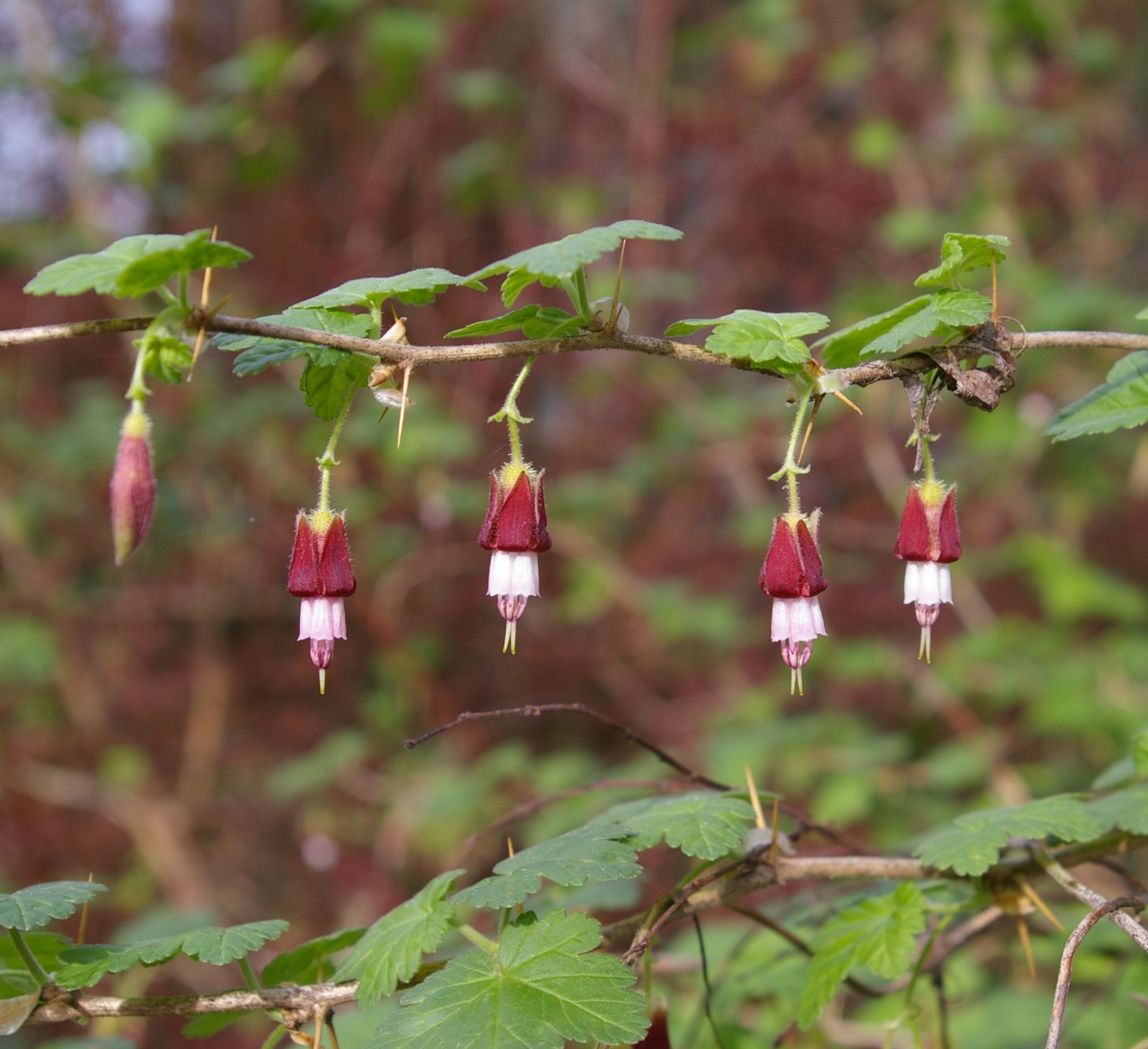Ribes roezlii
Credits
Article from Bean's Trees and Shrubs Hardy in the British Isles
Recommended citation
'Ribes roezlii' from the website Trees and Shrubs Online (treesandshrubsonline.
Genus
Synonyms
- R. amictum Greene
Infraspecifics
Other taxa in genus
- Ribes alpinum
- Ribes ambiguum
- Ribes americanum
- Ribes × beatonii
- Ribes bracteosum
- Ribes cereum
- Ribes ciliatum
- Ribes curvatum
- Ribes diacanthum
- Ribes fasciculatum
- Ribes gayanum
- Ribes glandulosum
- Ribes henryi
- Ribes lacustre
- Ribes laurifolium
- Ribes leptanthum
- Ribes lobbii
- Ribes longeracemosum
- Ribes maximowiczii
- Ribes menziesii
- Ribes mogollonicum
- Ribes nigrum
- Ribes niveum
- Ribes odoratum
- Ribes orientale
- Ribes pinetorum
- Ribes rubrum
- Ribes sanguineum
- Ribes speciosum
- Ribes tenue
- Ribes uva-crispa
- Ribes valdivianum
- Ribes viburnifolium
A deciduous armed shrub 3 to 6 ft high; young shoots downy. Leaves 1⁄2 to 1 in. wide, roundish or kidney-shaped in general outline, three- or five-lobed, the lobes with often sharp teeth, more or less downy on both surfaces, especially beneath; stalk 1⁄3 in. long, usually downy and sometimes glandular-hairy. Flowers solitary or in pairs on a short downy, often glandular stalk, pendent. Receptacle purplish crimson, downy, cylindrical, 1⁄4 in. long, the sepals 1⁄3 in. long; petals rosy white, erect, shorter than the sepals. Fruits purple, 1⁄2 in. wide, covered with slender bristles.
Native of California. This pretty and curious gooseberry is not common in cultivation; the plant that was distributed for it from nurseries was as a rule either R. lobbii or R. menziesii. Its nearest ally is R. cruentum (q.v.). Greene’s epithet amictum refers to the shape of the bract surrounding the base of each flower, which resembles the amice, or hood, worn by Roman Catholic clergy at mass.
var. cruentum (Greene) Rehder
Synonyms
Ribes cruentum Greene
Described by Bean as Ribes cruentum
A deciduous spiny shrub 3 to 6 ft high, more in diameter; young shoots minutely downy. Leaves roundish, 3⁄4 to 11⁄2 in. wide, three- or five-lobed, the lobes coarsely round-toothed, nearly or quite glabrous on both surfaces, stalk minutely downy, slender, 1⁄4 to 1⁄2 in. long. Flowers 3⁄4 in. wide, solitary, rarely in pairs, on a slender stalk 1⁄3 in. long, pendent. Receptacle 1⁄2 in. long, crimson, the tube narrowly bell-shaped, glabrous, the five sepals lanceolate, finally reflexed. Petals white, much shorter than the sepals; ovary covered with incipient spines. Fruits red, 2⁄3 in. across, with a hedgehog-like appearance due to their covering of numerous spines, each 1⁄6 to 1⁄4 in. long. Bot. Mag., t. 8105.
Native of California and S. Oregon; introduced in 1899. This interesting and remarkable gooseberry has flowers extremely pretty in their contrast of crimson and white, but they are not particularly abundant, usually one at each joint of the previous year’s wood. The berries are remarkable in their prickliness. It is closely allied to, and perhaps only a variety of R. roezlii [as treated here, 2023], but that species is distinctly downy on leaf and receptacle. Effective grown as a standard.




